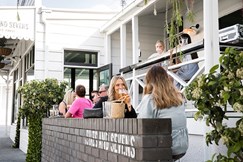Written by Katie Lidington
The purpose of Equality Act 2010 was to ensure that Protected Characteristic Groups (age, disability, gender reassignment, marriage and civil partnership, pregnancy and maternity, ethnicity, religion or belief, sex and sexual orientation) within communities were not disproportionately represented amongst those most likely to be affected.
In planning terms, this means any plans for community spaces are designed to be inclusive from the outset. Dr. Ellie Cosgrave, Director, UCL Urban Innovation and Policy Lab, Associate Professor at UCL suggests that different Protected Characteristic Groups shape the needs of public spaces. However, the needs of some groups are more included and understood in design decisions than others. In comparison, the exclusion of certain Protected Characteristic Groups means the needs of this group result in the exclusion of public life.
So how inclusive are the streets in our towns and cities? Has the recent introduction of Low Traffic Neighbourhoods (LTNs) made spaces safer? And will the recent switch to local living encourage inclusivity?
On the 23rd April 2021, the RTPI London, in collaboration with Women in Planning, hosted a webinar which discussed how planners and designers should rethink our public spaces to create a more inclusive environment, where women can not only feel safe but also thrive in the space.
Jenny Divine, Policy and Networks Advisor and co-author of 'Women and Planning' from the RTPI, described the varying travel needs and patterns between men and women. For instance, a survey showed that generally men tend to drive more whereas women walk or use public transport more. There has been a lack of attention to the function of our streets which includes poor lighting, lack of CCTV and narrowing pathways which makes places feel unsafe. Likewise, in many places, priority is given to the car which is seen as a key barrier to creating a gender sensitive environment.
In planning and design, there is a general lack of understand between gender inequalities which may be as a result of design inconveniences being accepted by women. This has led to planners and designers believing that current solutions are sufficient. To tackle gender inequalities in a meaningful way Jenny suggests we should need a co-ordinated approach to addressing the issues faced by women which starts with policy makers.
Designing inclusively has many benefits. According to Jacqueline Bleicher, Head of Programmes at Design Council, it can help tackle social disadvantages and create places which are more flexible.
What are the solutions? How can planners make streets more inclusive?
Inclusive design should be considered early in a project and continue to develop throughout its lifecycle. But this needs to be collaborative with a diverse steering group, including future users. This will encourage diverse thoughts and design solutions, ultimately creating a space which works for everyone.
Jacqueline outlines five key principles for creating inclusive environments:
- places people at the heart of the design process;
- acknowledge diversity and difference;
- offer choice where a single design solution cannot;
- provide for flexibility in use; and
- provide buildings and environments that are convenient and enjoyable to use for everyone.
Are Low Traffic Neighbourhoods the solution?
Sarah Berry, Herne Hill Campaigner for Low Traffic Neighbourhoods would say so. Sarah is a resident of a newly designated LTNs. For her, the change in street design has had a radical positive impact on her life.
LTNs have been around in London since the 1970s but made a resurgence in spring 2020 to create more space and allow people to travel safely due to the global pandemic. They are designed to make streets around London easier to walk and cycle by stopping vehicles from using quite roads as shortcuts.
Since the introduction of the LTNs, Sarah has seen an increase in people walking and cycling, including herself. And it’s not just Sarah, Brixton saw a 90% increase in cycling in just 4 weeks.
According to a recent survey, 71% of women thought it was too dangerous to cycle on roads. However, now the roads feel safer, more welcoming and as if you have been given permission to use them for something other than driving your car. In fact, the streets have changed from a place of getting around to a place where communities can come together.
LTNs alone are not the solution. They should be designated in conjunction with other inclusive design solutions. Badly lit streets or hidden corners will be unsafe with or without LTNs, these spaces just need better design.
What’s next?
There is still a lot of work to do. Whilst the RTPI does not represent the entire planning community in the UK, membership statistics show that 39% identify as female and 61% identify as male. These figures do highlight the disparities in the profession which more importantly do not represent communities that we are planning spaces for. So, until we have better representation in the industry educating planners and designers on the impacts of inequalities and the disparities between Protected Characteristics Groups will be essential.
This along with encouraging better collaboration between decision makers, policy makers and future users will hopefully lead to more inclusive communities.